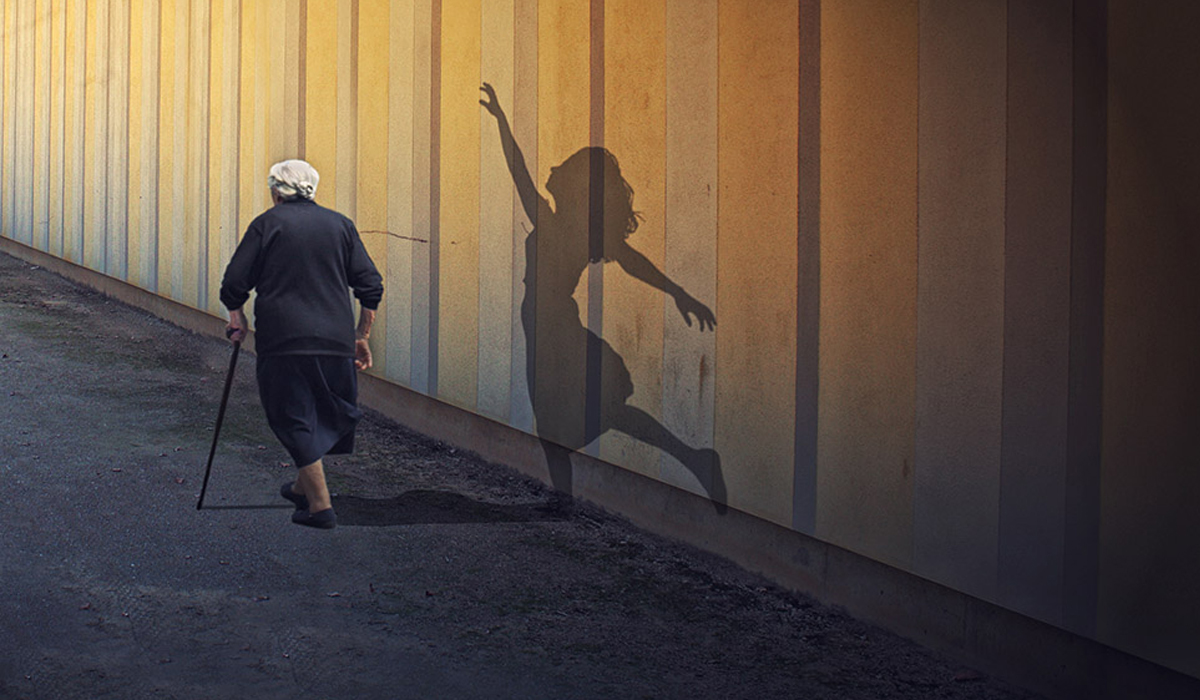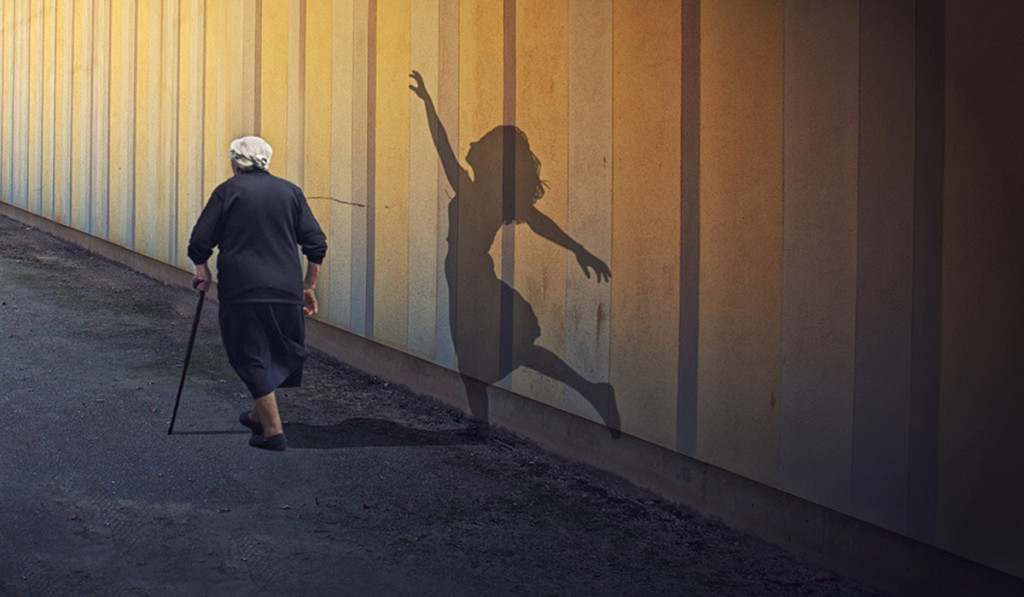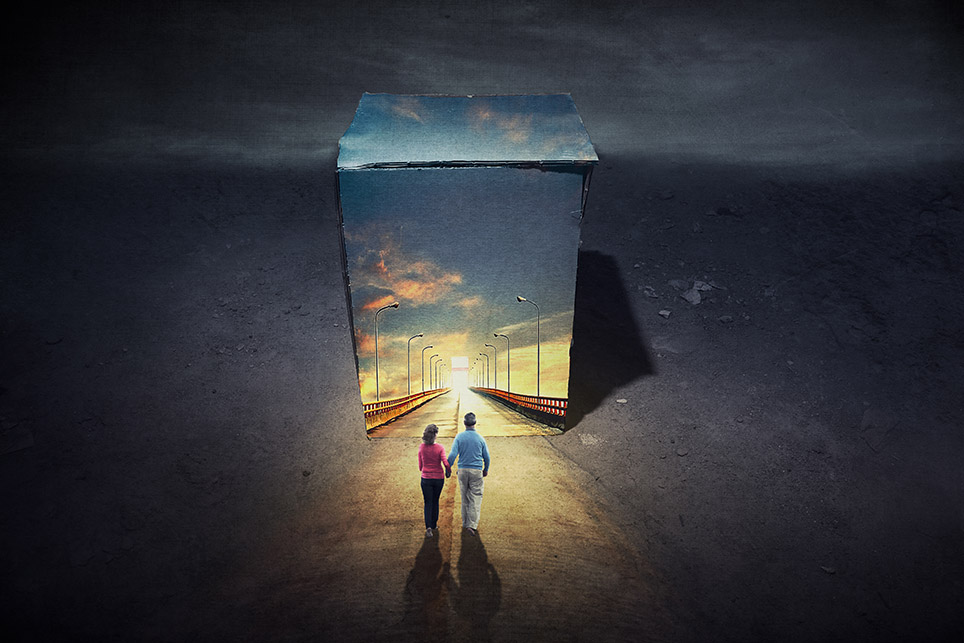Immagini surreali.
Fantasie fatte di luci e ombre. Uomini dipendenti dalla tecnologia o che cercano di liberarsi dalle loro maschere.
Opere realizzate a mano, magari utilizzando una scatola di cartone e poi rese perfette con l’uso del computer. Francesco Romoli, artista misterioso e introspettivo, utilizza tecniche diverse per realizzare lavori che non lasciano indifferenti.
Siamo rimasti affascinati dalle tecniche e dai messaggi che propone nelle sue opere, così, noi di The Walkman, abbiamo scambiato due chiacchiere con lui, per conoscere meglio l’uomo e l’artista che c’è dietro.
Perché hai scelto come descrizione di te stesso la canzone dei Radiohead “Karma Police”? Come ti rappresenta questo brano?
Il Karma è la legge di causa e di effetto applicata alla vita della psiche, legge secondo la quale si raccoglie il frutto di ciò che si è seminato o si subiscono le reazioni delle proprie azioni. Opera nel bene e nel male, nella ricompensa e nella punizione per la moralità e l’immoralità, e agisce come una grande forza naturale per tutti i problemi concernenti la condotta dell’uomo. La polizia del karma dei Radiohead che mi richiama all’ordine in realtà è un desiderio, forse un’illusione. Sicuramente una consolazione. Un desiderio di giusto, di assoluto, di metafisico. La tensione verso l’infinito del romanticismo parzialmente soddisfatta direi. Irreale? Forse.
Raccontaci gli inizi del tuo percorso artistico. Com’è nata la voglia di rappresentare il mondo da un punto di vista creativo e come mai in questo modo così interessante e innovativo?
Esprimersi, in qualsiasi modo lo si faccia, è come un grido: “ehi, sono qui, in fondo, mi si vede a malapena….ma ci sono anch’io !!!!!”. E’ un tentativo decisamente infantile di alterare la realtà, mettendo il proprio ego su di un piedistallo per affermare la propria (presunta) centralità. E’ ridicolo a ben pensarci, ma ha qualche vantaggio non da poco. Calma l’inquietudine, dispensa pillole di serenità, aumenta la consapevolezza dei propri limiti. Per quanto mi riguarda è da quando sono piccolo che urlo “ci sono anch’io”, e per farlo negli anni ho usato le modalità più variegate e bizzarre. L’arte digitale (chiamiamola così) è solo lo strumento di adesso, nata da un incontro tra la fotografia e i miei studi informatici.
Nella raccolta “Artificial Intelligence” e in “Postcards from the future” ti soffermi sulla tecnologia, ormai sempre più al centro delle nostre vite. Come pensi possa evolversi il rapporto uomo/innovazioni? Pensi che la tecnologia possa essere il mezzo per nuovi percorsi culturali oppure un freno per la creatività e le capacità personali?
L’innovazione fa parte di noi. L’uomo da sempre scopre e utilizza nuove tecnologie. La scoperta dell’agricoltura nel neolitico rivoluzionò il nostro modo di vivere, così come la scoperta del vapore e dell’elettricità. E la lista è lunghissima, e parte dall’età della pietra e arriva fino ad oggi. Aggiungi un appuntamento per oggi. L’uomo continuerà a scoprire, a costruire, a cercare perché, a differenza di altre forme di vita, ha bisogno di cercare un senso ultimo. Ed è per questo che la tecnologia non è un mezzo per qualcosa. La tecnologia è una forma di cultura e di creatività. Per usare un termine caro a R.Dawkins la tecnologia è un chiaro esempio di evoluzione memetica, intendendo con meme un’entità di evoluzione culturale, esattamente come il gene per la genetica.
Nella tua raccolta “Imaginary towns” rappresenti la città nelle sue sfaccettature, luogo di speranza e delusione. Come giudichi la metropoli contemporanea, le sue suggestioni e i suoi difetti e quale città, più di tutte, è riuscita a trasmetterti qualcosa?
Io non vivo in città, mi piace moltissimo visitarle ma in linea di massima dopo due o tre giorni ho bisogno di spazi aperti e deserti. Delle metropoli non sopporto il divario tra centro raffinato e culturalmente vivace e periferia/dormitorio. Detesto il concetto che sottintende, e cioè quello di struttura sociale fortemente gerarchizzata. Quindi da questo punto di vista (tralasciando la storia e le bellezze architettoniche) preferisco le capitali del nord, più a dimensione d’uomo, Copenaghen o Oslo sono un buon esempio.
Nelle tue opere è costante l’analisi dell’uomo moderno. La sua dipendenza dalla tecnologia, la malinconia, la solitudine. Come valuti la condizione dell’uomo in un periodo come questo? E come può l’artista restituire un ritratto realistico di ciò che ha intorno?
Non credo che l’artista debba dare un ritratto realistico della realtà. Io non faccio reportage e in ogni caso le mie immagini sono necessariamente mediate dal mio background culturale, le mie credenze, le mie aspettative e le mie speranze. Quello che secondo me dovrebbe fare l’arte è stimolare riflessione e curiosità su argomenti (selettivamente selezionati) che l’artista ha voluto mettere in evidenza per motivi personali o sociali. “Imaginary towns” è un lavoro malinconico ma questo non implica che tutte le città siano posti vuoti, degradati e malinconici.
“The WalkMan” si pone come obiettivo quello di lasciare spazio e visibilità ai giovani talenti come te. Cosa ti senti di suggerire a chi ha deciso o sta decidendo di investire la propria vita nella creatività?
E’ un bellissimo progetto e vi ringrazio per lo spazio concessomi. Quello che mi sento di dire è in realtà una grande banalità, inflazionata fino alla nausea. Però con un fondo di verità. Chi si vuole dedicare ad attività creative dovrebbe farlo per passione, per bisogno. Ovviamente si può fare anche su commissione ma non dà la stessa soddisfazione.
[divider]ENGLISH VERSION[/divider]
Surreal images.
Fantasies made up of lights and shadows. Men who are addicted to technology or who try to free themselves from their own masks.
Handmade artworks, made, for instance, by using cardboard boxes, and then finished until they reach perfection by computer. Francesco Romoli is a mysterious and introspective artist, who uses different techniques to manufacture works that leave no one indifferent.
We were fascinated by the techniques used and by what he wanted to convey through his artworks, so, we members of The Walkman, had a good talk with him, in order to reveal both the man and the artist who conceal behind him.
Why did you choose Radiohead’s song “Karma Police” to describe yourself?
Karma is the law of cause and effect applied to the psyche’s life, according to which you reap the fruits of the seeds you sowed, or endure the consequences of your own actions. It acts in good and bad will, in reward and punishment for the sake of morality and immorality, and it acts for all sorts of behaviour concerned with mankind’s conduct. Radiohead’s karma police’s call to order, is actually a desire, maybe an illusion. Certainly a consolation. It’s an aspiration for what is right, complete, and metaphysical. I’d say that Romanticism’s stretch towards the infinite is partially fulfilled here. Unreal? Maybe.
Tell us about the beginning of your artistic journey. How did your desire to represent the world from an artistic point of view develop? And how come you chose such an interesting and innovative way to represent it?
Expressing oneself, in whatever way one might do it, is like screaming: “Hey, I’m here, all the way down here, you can hardly see me…but I’m here too!!!!!”. It’s a terribly childish attempt to alter reality, putting one’s own ego on a pedestal in order to assert its (alleged) centrality. It’s silly if you actually think about it, but there is some valuable advantage to all this. It calms anxiety, distributes serenity, and increases one’s awareness of his/her own limits. As far as I’m concerned, I’ve been screaming, “I’m here too” since I was a child, and to do so, during these days, I have been using the most bizarre and varied ways. Digital Art (if we want to call it so) is only an instrument of these days, born from the union of photography and my computer studies.
In your collections “Artificial Intelligence” and “Postcards from the future” you focus on technology, which is increasingly gaining ground in our lives. How do you think the relationship between man and innovation may develop? Do you think technology may be a successful means for new cultural itineraries or, on the contrary, do you think it may restrain creativity and personal achievements?
Innovation is part of us. Man has always embraced discovery and has always used new technologies. The invention of agriculture during the Neolithic revolutionized our way of living, as the discovery of steam and electricity did. The list is very long, starting from Stone Age to our times. Add an appointment to today’s schedule. Man will continue to discover, build, and search because, unlike other living beings, he has the need to find an ultimate meaning. And this is the reason why technology is far from being a means to an end. Technology is a form of culture and of creativity. To use a definition dear to R. Dawkins technology is an evidence of memetic evolution, meaning for meme an entity of cultural evolution, such as a gene for genetics.
In your collection “Imaginary towns” you portray the city in all its possible aspects, as a place of hopes and disillusionments. What is your opinion of modern metropolis, its charm and its flaws? And what city, more than any other, conveyed something to you?
I don’t live in a city. I love visiting them, but usually after two or three days I long for open and deserted spaces. What I do not tolerate about cities is the gap between the elegant, and culturally vibrant city-centre and the dormitory suburbs. I despise the image of a structured hierarchical society. So, from this point of view (without taking into account history and architectural beauty), I prefer northern cities, more man-tailored. Copenhagen or Oslo may be good examples.
In your works the analysis of modern man is ubiquitous. His addiction to technology, its misery and sadness. What do you take of man’s condition in a time such as ours? And how can the artist produce a realistic portrait of what surrounds him?
I don’t believe the artist should create a realistic picture of reality. I’m not a photojournalist and, at any rate, my photographs are filtered by my cultural backgrounds, my beliefs, my expectations and my hopes. In my opinion, what art is meant to do is stimulating refection and curiosity on matters (accurately selected) the artist wishes to highlight for personal and social reasons. “Imaginary towns” is a melancholic work, however this does not mean that all cities are empty, decayed, and gloomy places.
“The Walkman” ’s primary goal is to give voice and visibility to young talents such as yourself. What kind of advise would you like to give to someone who is willing to invest in creativity?
This is a brilliant project and I thank you for your interest in my work. What I feel like saying is quite trivial, and perhaps over-redundant. However, there is some truth to it. Whoever wishes to dedicate his life to creativity should do so with passion, to satisfy an inner need. Of course you can be creative even if commissioned by someone else, but it will necessarily be less fulfilling.
Traduzione a cura di Marianna Testa




